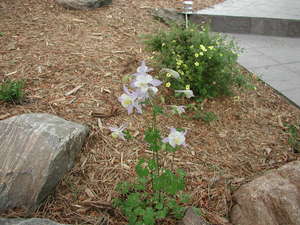Are you struggling with a stubborn drain line? The most common plugged drain is the sewer line that services the toilet in a residence but drain lines that service sinks and bathtubs run a close second.
Americans spend giant size amounts of money every year on drain cleaning.
The U.S. Census Bureau reports in their 2002 Economic census that in Washington State alone sewer cleaning services exceeded $25 million.
The 2006 Report on Sanitary Supply Distributor Sales reports Americans spent over $316 million dollars on bio enzymes like drain openers, drain cleaners, etc. to unplug and maintain drain lines.
The Uniform Plumbing Code, and most other nationally recognized plumbing codes mandate the installation of residential sewer and drain lines to a standard that facilitates sanitary conditions. This means installing the drain and sewer lines in proper size pipe and to the proper pitch or slope. In most new construction this is not problematic because local building officials inspect most plumbing systems in the United States. However, there are many older homes in the United States whose plumbing systems were installed either to antiquated standards or to no standards at all.
Years ago, the plumbing codes in existence then, and even industry standards recognized for that time and place, allowed drain lines for sinks and bathtubs to be installed using smaller diameter pipe than is common today. For example, it was common to see 1¼” diameter pipe used in bathroom sink drains (also known as lavatories). The modern plumbing codes all require those same drains to be installed using 1½” pipe. What difference could that make, you ask? Well, drainage theory is based on the principle of self-scouring flow in a horizontal pipe. That is, a liquid flowing through a properly sized horizontal drain line will swirl and tumble much like a stream tumbling down a hillside. The tumbling, swirling water tends to scrub the sides and bottom of the creek bed washing debris, moss, algae, and fine sand downhill. Liquid flows in a horizontal drain line in a similar fashion keeping the sides and bottom portion of the pipe relatively free of buildup. Properly sized and installed drain lines allow solids and liquid to flow together. When the solids and liquid separate, the solids tend to adhere to the sides and bottom portion of the drainpipe eventually plugging it up.
In general, drain lines run slow or plug up totally, because, all other considerations aside, we don’t utilize our plumbing fixtures in accordance with the designs mandated by the plumbing code standards in effect today. Most people just turn on a bathroom sink faucet and let the water run from the spout while they shave or apply make-up or wash. They use the kitchen sink in the same way, letting the water run while they wash dishes or prepare food. Proper use of the bathroom sink to help avoid a plugged sink drain line is to fill the basin with water and complete personal hygiene, then release the drain plug and let the water flow out full force. This sudden release of a relatively large amount of water takes advantage of the self-scouring properties of a properly installed drain line and helps to keep the pipe flowing free.
This same routine is good for bathtubs, laundry sinks, and kitchen sinks, as well. Periodically, fill the tub or sink most of the way with water, hot or cold, and release the drain plug.
Unfortunately, those earlier codes, even the Uniform Plumbing Code, and other modern plumbing codes in use today are less concerned with water conservation to a degree than they are with sanitation, which is their primary mandate. So, it is best to try and hit a happy medium and only send a large quantity of water down the drain periodically. I recommend about once a week.
Using a good quality hair catcher can also help to stop hair, one of the toughest of drain obstructions, from getting in the bathtub and shower drains. You can also pour a mixture of vinegar and baking soda down your sink and tub drains to help keep them running freely. Pour the old baking soda you used in your refrigerator down the sink drains to sweeten them. This works especially well for sinks with a garbage disposal. Be careful with the vinegar and baking soda, however. Remember your high school chemistry? That is the recipe for a volcano. Pouring left over soda pop down the drain will also help to keep them clear; use the dark colored most popular ones, the clear ones don’t really help.
The above steps are only efficacious if your drains are already running freely. They just help to keep those drains running free. If the drains are slowing down or are totally plugged up, you’ll want to take additional steps.
Finally, if you have tried all else and are going to resort to a drain-cleaning chemical, remember the following:
Over the counter drain-cleaning chemicals are deliberately manufactured to a diluted degree for liabilities’ sake. Follow the manufacturer’s recommendations but don’t expect too much.
If you do use a drain-cleaning chemical and then find you have to call a plumber or drain cleaning company, be sure you tell the service man what chemicals you put down the drain. Caustic chemicals and acids burn and can injure you or someone else.
Never, ever put drain-cleaning chemicals down a toilet no matter what anyone says. If you do manage to get it put down the toilet drain without problems, when you or someone else flushes the toilet, you (or they) will be in for a nasty surprise!
Patience and an understanding of how your plumbing system is built will help you to maintain your plumbing drain lines in proper operation.



